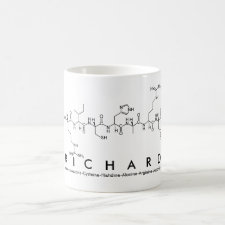
Authors: Ansell RJ, Kuah KL
Article Title: Imprinted polymers for chiral resolution of (+/-)-ephedrine: understanding the pre-polymerisation equilibrium and the action of different mobile phase modifiers.
Publication date: 2005
Journal: Analyst
Volume: 130
Issue: (2)
Page numbers: 179-187.
DOI: 10.1039/b408751h
Abstract: A thorough study has been made of the ephedrine-methacrylic acid (MAA) system for molecular imprinting, involving NMR studies of the pre-polymerisation equilibria, modelling and HPLC enantioseparations with different mobile phases. When dimerisation of MAA is accounted for, NMR titrations demonstrate there is a very strong ('stoichiometric', K » 10000 M-1) interaction between ephedrine and a single MAA monomer. Polymers prepared with a 1 : 1 monomer : template ratio are capable of enantioseparation, indicating, in combination with the NMR results, that the 1 : 1 interaction probably involves the carboxylic acid acting as a chelating monomer, forming hydrogen bonds to both the template amine and hydroxyl moieties. Higher monomer : template ratios cause further changes in the NMR signals, suggesting at least one further MAA can interact with the amine group, with a weaker association constant (K » 80 M-1). Polymers prepared with a 4 : 1 monomer : template ratio are thus proposed to contain a mixture of 1-monomer binding sites and 2-monomer binding sites, the latter being of enhanced acidity. In HPLC, better results are obtained with the 4 : 1 polymer using acetic acid as a modifier, while better results are obtained for the 1 : 1 polymer using butylamine as a modifier. We propose a model whereby acetic acid exerts its effect by reducing binding to the 1-monomer sites, while butylamine works largely through blocking the most acidic, 2-monomer sites. For preparative chromatography we suggest the 1 : 1 polymer, with a larger population of weaker but more uniform binding sites, is most promising.
Template and target information: ephedrine



Join the Society for Molecular Imprinting

New items RSS feed
Sign-up for e-mail updates:
Choose between receiving an occasional newsletter or more frequent e-mail alerts.
Click here to go to the sign-up page.
Is your name elemental or peptidic? Enter your name and find out by clicking either of the buttons below!
Other products you may like:
 MIPdatabase
MIPdatabase









